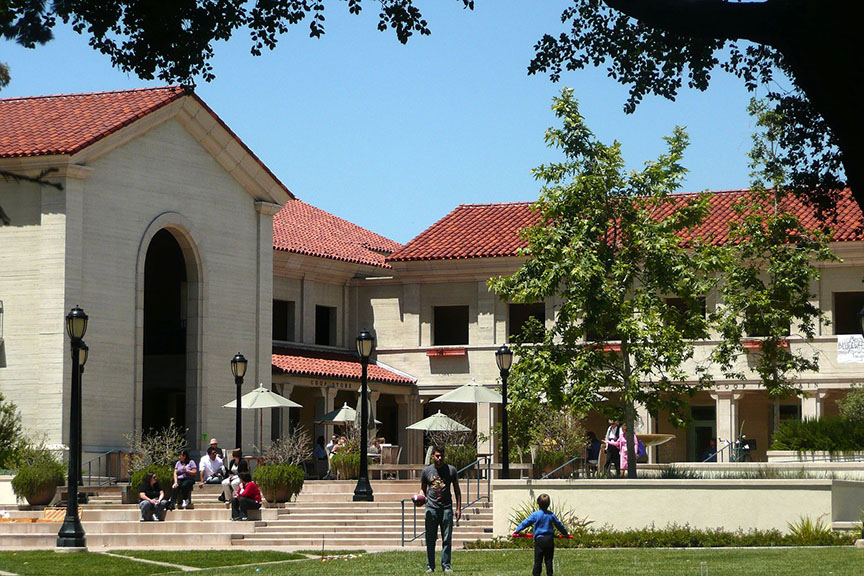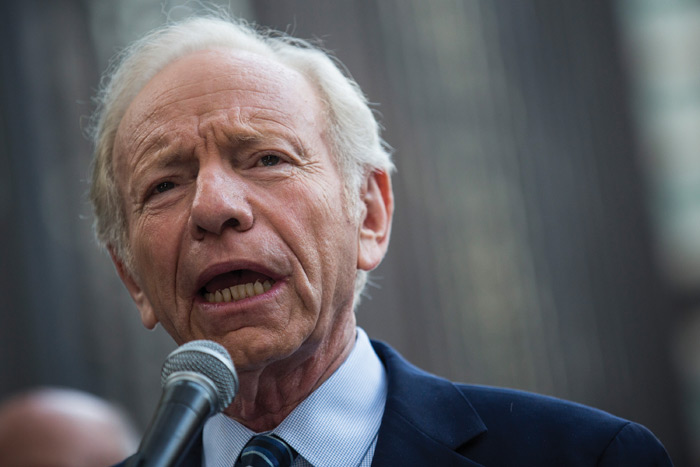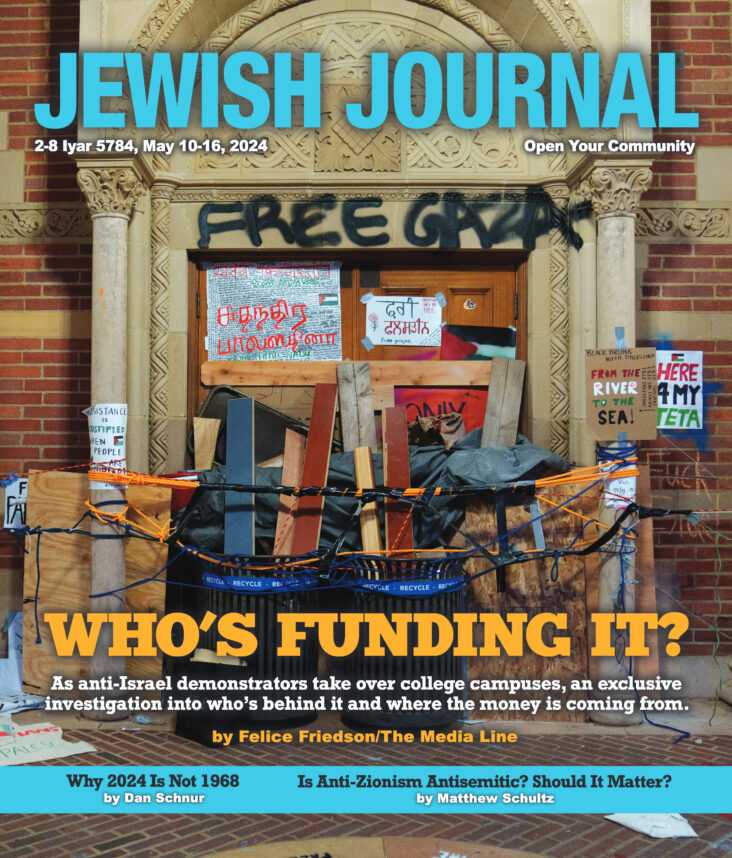On a chilly night in early December, crowds of parents filed into the auditorium at Kadima Hebrew Academy/Kadima Heschel West Middle School, chatting and clutching cups of coffee. The atmosphere was almost festive as finance committee chair Brett Grauman stood at the podium, framed by blue tinsel Stars of David.
“Jewish education should not be only for the wealthy,” Grauman said. “We understand what our families are going through; Kadima is feeling it, too.”
Scattered murmurs rose from the audience as he unveiled the highlight of the assembly — lower tuition rates for the 2009-2010 school year. Through a partnership of parents and donors subsidizing the cut, yearly costs for students in grades K-8 would be reduced between 19 percent and 22 percent.
The economic conditions that necessitated the rare move echoed the story of that week’s parsha, said the school’s Rabbi Avi Navah, in which Jacob flees his home to escape his brother’s wrath and finds himself wandering in the wilderness toward an unfamiliar place.
“He is lonely, frightened, insecure and unsure about his future,” Navah told the roomful of parents and teachers. “This story shows that we in the Jewish community should expect highs and lows.”
As the economy sinks further into unfamiliar territory and fewer Los Angeles residents feel certain about their futures, Jewish education is perched on the brink of what some say could be a steep decline toward one of those prophesied lows. Enrollment numbers have already begun to slide at some schools, endowments and donations are taking a hit and requests for financial aid have spiked since the fall. Some school officials predict their classrooms next September will be dotted with empty seats.
Los Angeles’ day schools are only beginning to feel the effects of the recession, said Miriam Prum Hess, vice president of The Jewish Federation and director of day school operations for the Bureau of Jewish Education (BJE).
“Schools are beginning to see an impact, but it’s still too early to fully tell what that impact will be,” Prum Hess said. “I think there will be more to come. Right now there is a lot of panic among the families, and the schools are trying to respond to it.”
That panic is registering at institutions across the board, according to a survey Prum Hess sent out in October to the 35 BJE-affiliated schools. Twenty-two schools reported a total of at least 170 families in “economic distress.” About 125 students had pulled out of school either just prior to the start of classes or during September, and 10 additional students left in October. At the time of the survey, 60 families had asked to renegotiate tuition for the current academic year, and 99 families had already asked for increased financial aid for 2009-2010. Ten schools said they anticipate a drop in enrollment next year.
So far, the pressure has forced administrators to do extra fundraising, trim their budgets and hone their vocabulary for calming the fears of parents facing a financial squeeze. Schools have deferred or extended tuition payments, reduced fees for extracurricular activities and even helped families find work.
Jewish educators nationwide are rethinking fiscal practices with an eye toward hard times ahead, said Josh Elkin, executive director of the Boston-based Partnership for Excellence in Jewish Education (PEJE). Although there is no “one-size-fits-all” response, common steps include diversifying streams of revenue and working to prevent student attrition.
“Many schools are focusing more on helping existing students because they’re already in the school and have already made an investment,” Elkin said. “Schools are staying in touch with those families and trying to hang onto them, so they don’t lose too many people because a change in economic circumstances has knocked them for a loop.”
Going Public
But that doesn’t help families transitioning between elementary and high schools. When Sharon Bacharach’s son Jeremy graduated eighth grade at Pressman Academy last spring, the family decided to go public for his high school years.
“Jewish high school is very costly,” said Bacharach, a kindergarten teacher at Pressman. “Even before the economic crisis, $30,000 would have been difficult. That’s more than some colleges. We couldn’t justify paying that much for high school.”
Many day school families have already ruled out private school as an option for next fall out of fear for the future, Prum Hess said. Even upper-income families are looking at the cost of Jewish high school — where the average tuition hovers at $26,000 — and deciding to proactively tighten their belts.
“Sometimes when people are in a panic, even if they aren’t yet impacted, they’re thinking, ‘Should we spend so much money next year when there’s a good public school nearby?’” Prum Hess said.
Jeremy, 15, is now a freshman at the music magnet of Hamilton High School. The Los Angeles Unified School District school has seen a spike in students coming in from local private schools, according to assistant principal David Way.
“We always have inquiries, but it was really marked this year how many people were looking for a new place for their kids,” said Way, who oversees Hamilton’s music magnet. He said between 10 and 15 families from the Modern Orthodox Shalhevet School alone approached Hamilton over the summer about transferring. Most blamed financial turmoil.
Administrators at New Los Angeles Charter School and Millikan Middle School are also fielding a surge in calls from day-school parents looking to transfer this fall. Alison Miller, coordinator of Millikan’s performing arts magnet, said she has been giving tours to families from the day schools of Temple Beth Hillel, Temple Israel of Hollywood and Adat Ari El, as well as secular private schools including Campbell Hall, Laurence School and The Buckley School.
Valley Beth Shalom Day School this year also saw a rise in families switching to public school, head of school Sheva Locke said. More parents than usual opted to pull their children out of the K-6 school after fifth grade in favor of placing them in public middle school, which starts at sixth grade.
But for many families, the decision is not easy. Bacharach said she felt conflicted at first about taking her son out of Jewish education, so the family made efforts to compensate for the lack of religious immersion in other areas. They go to synagogue almost every Shabbat and share Friday night dinners. They also enrolled Jeremy at Los Angeles Hebrew High School on Sundays to boost his Hebrew language and cultural exposure.
Religious schools seem to be a bright spot amid the otherwise bleak news at L.A.’s Jewish schools. Many are experiencing growth as day school enrollments decline.
Principal Ellen Goldberg said the religious school at Temple Isaiah has been growing steadily over the past few years. The school had 486 students in 2006-2007 and 525 in 2007-2008. Enrollment is now 529.
Goldberg said the school gained three students over the past two years who had joined after transferring from day school to public school. “Most parents want a bar or bat mitzvah, so these students have to go somewhere for a Jewish education,” she said.
Rabbi Elianna Yolkut, assistant rabbi and director of the religious school at Adat Ari El, saw a “significant” jump in enrollment in the 2008-2009 year, from 86 to 111 students. Applications for 2009-2010 are not in yet, but the Conservative Valley Village school is expecting another increase. Yolkut said she’s not sure how much of the growth is economy-driven, and there are lots of reasons people choose religious school over day school.
But to Bacharach, one thing is clear: “More people would choose Jewish high schools if they were more affordable.”
Shrinking Classes
Affordability will play a key role in how Jewish day schools weather the current economic storm, said Rebecca Steinberg, director of institutional advancement at Milken Community High School. But another factor might soon compound the threat to day school viability — demographics.
Schools will be hit doubly hard in the next couple of years because the pool of children entering Jewish classrooms across the city is shrinking, experts say. There are at least 100 fewer students in the feeder schools that typically send their graduates to Milken, according to Steinberg.
“That’s a huge drop,” she said. “For secondary schools like Milken, that’s going to have a big effect.”
The drop in grade sizes at Jewish day schools has many causes, including an aging population, couples postponing having children and younger families being unable to afford housing in traditionally Jewish areas where the best day schools are located, L.A. demographer Pini Herman said.
“Either you’re putting your money into housing or you’re putting it into school,” Herman said. “The people who can afford to put their money into both are fewer in number.”
Nationally, the incoming middle school age group this fall will be the smallest in about a decade. Birth rates fell from 1990 to 1997, when post-WWII baby boomers grew too old to have children, said Saratoga-based demographer Jeanne Gobalet. High schools will feel the effects of this “baby bust” for the next six years.
Herman believes many L.A. day schools won’t survive in the next decade as class sizes decline and funding becomes scarce, and synagogues might eventually only offer supplemental religious school for a Jewish education. “That is a totally different experience,” he said.
Strength in Innovation
How to prepare for the lean times to come is the question on everyone’s minds as applications trickle in for the fall and schools work on finalizing their 2009-2010 budgets. Most agree that educators must embrace outside-the-box thinking to stay afloat.
“This is an all-hands-on-deck environment,” said Bruce Powell, head of school at New Community Jewish High School. “This is a time for boards to take profound leadership positions in the financial aspect of running the schools. Sixty-three years after the end of the Holocaust, how can we allow Jewish families not to continue in Jewish education? That would be a historic shame.”
New Jew is freeing up funds for financial aid wherever it can. By switching from paper mailings to e-mails, for example, the school plans to save as much as $40,000 next year.
Another way to ensure the survival of Jewish education into the future might be a shift toward Hebrew-language charter schools, according to Valley Beth Shalom Day School board member Jonathan Schreiber. Hebrew charter schools — public schools that offer Hebrew-language instruction and opportunities for cultural acquisition — do not have the same resources as private schools, but might be a more viable option for families seeking an alternative to high-cost Jewish day schools.
“No public school is the same as a private school,” Schreiber said. “But in the long term, it has to be something to consider. If we don’t do it, we will be inviting the opportunity for people to completely opt out of Jewish education.”
Shawn Evenhaim, board of trustees president at Kadima Hebrew Academy/Kadima Heschel West, believes the way to improve access to Jewish education is if more schools follow Kadima’s lead in lowering tuition for students.
“When everybody is losing, it becomes a community issue,” Evenhaim said. “That’s a sign for us to wake up and find other solutions — the old model does not work anymore.”
Board members saw the tuition cuts as a way to stem student attrition after a sharp decline last year: 33 students did not re-enroll for the 2008-2009 school year and two more pulled out during the fall. The Conservative West Hills school also had to raise additional funds in October to make up for a rise in financial aid requests, Evenhaim said.
Kadima’s plan isn’t without caveats. To help offset cuts for the upper grades, tuitions for the school’s Early Childhood Center and Pre-K would rise 9 percent and 20 percent, respectively. Also, under the new model, the school will need to enroll 300 students to break even. They currently have 260.
But at the assembly in December, many parents seemed to feel the risks were worth it. Brandon Chasin and Morgan Simon, a Lake Balboa couple, said the move would help them keep Simon’s daughter, Mia, 5, in the school. “I’m ecstatic to see the school doing this,” Simon said. “This is the light at the end of the tunnel.”
There are other rescue plans in the works, too. The BJE in December secured a $12.7 million grant from the San Francisco-based Jim Joseph Foundation to help subsidize tuition for middle-income families at five Jewish high schools in Los Angeles. A stipulation of the grant is that the beneficiary schools — Shalhevet, Milken Community High School, New Community Jewish High School and the Yeshiva University of Los Angeles (YULA) boys and girls high schools — must in turn raise an additional $21.25 million within the next six years for a community endowment fund to pay for Jewish education in the future.
Building communal funds to support Jewish schools regionally is becoming more popular, said Elkin, executive director of PEJE. In the MetroWest region of New Jersey, for example, a $50 million community endowment holds down the cost of tuition at the area’s three day schools.
“There is a change taking place where Jewish day schools are not totally going it alone,” Elkin said. “There is strength in the collective, and day schools are realizing that they are better off working with their local communities.”
Elkin touted this notion at a summit meeting Jan. 6 at the New York headquarters of the Orthodox Union, in which yeshivot around the country took part by teleconference. The summit — the first of its kind — addressed the effects of the recession on Orthodox schools. Harkham Hillel Hebrew Academy and Valley Torah High School phoned in locally.
Rabbi Boruch Sufrin, head of school at Harkham Hillel, said he hoped L.A. schools could collaborate to pull in more grants. “We must find creative ways to support parents by funding tuition so schools can continue to grow,” he said.
‘Very Little Visibility’
For now, educators across the city are counting their losses and bracing for a future that looks murky at best.
“There’s not a school throughout Jewish education that has not felt this on some level,” said Rabbi Abraham Lieberman, head of school at YULA Girls High School. “It’s the whole Jewish world.”
So far, six families out of 175 at the Orthodox girls’ school have told officials they can’t keep paying their tuition, CFO Joel Epstein said. At YULA Boys High School, another eight families are in the same boat. About 36 percent of students at each school currently receive some level of financial aid, and Epstein expects that population might grow a dramatic 10 percent in the 2009-2010 year.
The situation is similar at Yeshiva Gedolah, where at least seven families will not be able to pay the tuition they agreed to this year. Executive Director Yossi Gross said the economy is affecting the boys’ high school in several ways.
“You have parents who weren’t on scholarship beforehand that now don’t have funds to pay the tuition,” Gross said. “You have some people who were wealthier and now they just aren’t doing as well and it’s hard for them to afford a full tuition. Some people who were major donors of the school are no longer able to do that either.”
Financial aid scholarships account for 50 percent to 60 percent of Yeshiva Gedolah’s yearly budget, he said. To cover increased need, the school is reaching out to expand its pool of donors.
This year, BJE-affiliated schools saw financial aid soak up between 2 percent and 5 percent more of their operating budgets than it did last year, Prum Hess said. “Many schools have already gone above what they budgeted for financial aid this year as they try to work with families who are struggling to keep their students in,” she said.
That is forcing schools to lean more heavily on the generosity of donors — many of whom are now smarting from losses in the financial markets, including some tied to the Madoff hedge fund scheme — or dip into their endowments.
But school endowments also took a hit last fall as the value of their investments plummeted. Rabbi Mitchel Malkus, head of Pressman Academy, said the elementary school’s endowment suffered a 25 percent to 30 percent loss from August to December. “We expect that the payout for the current year will be significantly reduced,” Malkus said.
A “handful” of families in October asked for more financial aid for the current year, he said, and he expects tuition assistance to be a factor in whether families re-enroll next year.
“We don’t really know what will be next year. There is very little visibility. One of our concerns is that people are hanging in there for now, but they may say, ‘We can’t do this’ next year,” Malkus said. “Overall, Jewish day school has become very expensive — we grapple with this even in good times. Now, a situation that none of us have ever experienced before is piling on top of that.”
The unpredictable nature of the economy poses a challenge for schools as they plan their 2009-2010 budgets: Administrators must prepare for growing financial need while maintaining the quality of programming their families expect. Educators say cuts will be inevitable in the face of a crisis whose size and duration are difficult to fathom.
Rabbi Elchanan Weinbach, head of the K-12 Shalhevet School, said he anticipates having to trim support personnel from Shalhevet’s staff. He believes Jewish schools citywide are being “very conservative” when evaluating what programs to bring back in September.
“Schools are looking very carefully at each area of expenditure and asking whether it’s absolutely necessary to fulfill their mission,” Weinbach said. “During freer economic times, they might not pay such close attention to them. There is no luxury for that now — if it’s not essential to the mission, it can’t be maintained.”
At the same time, schools are banking on the inherent draw of Jewish education to lure families back as they plan their personal budgets for the coming year.
Ultimately, the mission of Jewish instruction will be a source of strength keeping day schools alive through the current crisis, said Elkin, of PEJE.
“We’re a very resilient people. There are an increasing number of messages coming forward, saying, ‘We have a vision of Jewish life in the future. We have missions in our institutions that are sacred.’ Part of the message is to stay true to who we are and to keep telling the story. That keeps us pressing forward.”






















 More news and opinions than at a Shabbat dinner, right in your inbox.
More news and opinions than at a Shabbat dinner, right in your inbox.